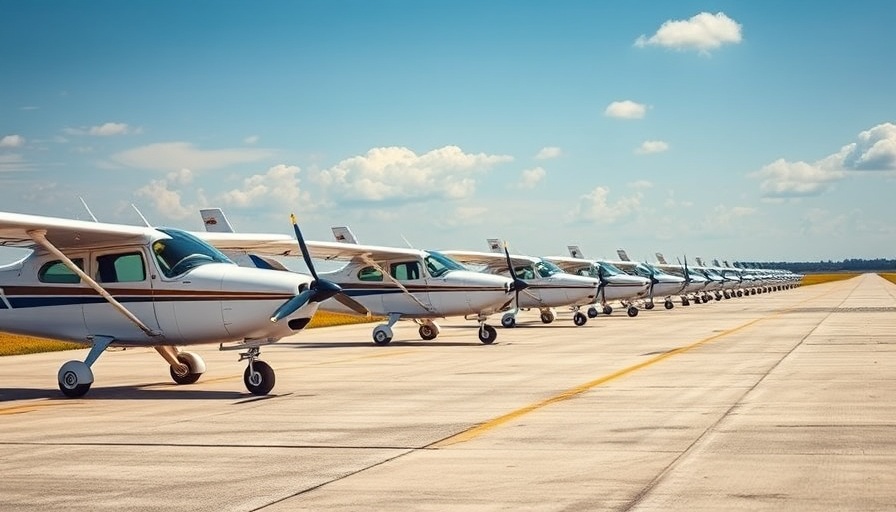
Exciting News for Aspiring Pilots and Aircraft Technicians
Epic Flight Academy, nestled in New Smyrna Beach, Florida, has just received accreditation from the Accrediting Commission of Career Schools and Colleges (ACCSC). This prestigious recognition signals a significant milestone for the academy, which has been pioneering flight and aircraft mechanic training since 1999. This accreditation does not just enhance the school's reputation; it opens a world of opportunities for students looking to soar in their aviation careers.
New Avenues for Funding: Empowering Students
The accreditation achievement allows Epic Flight Academy to provide students with access to federal loans and Pell Grants, enabling them to learn to fly with reduced financial burdens. Director of Education, Cindy Lovell, emphasized that this development opens up various financial options, including state residency funding and private loans. “Having accreditation from an ED-approved organization allows us to compete for these funding opportunities, providing a better value to our students,” Lovell noted.
Strengthening Educational Partnerships
Beyond financial support, gaining accreditation positions Epic Flight Academy to forge partnerships with more colleges and universities. Lovell confirmed that they are in talks with several academic institutions to finalize articulation agreements. These agreements will allow students to transfer their flight and aviation maintenance technician training as college credits, saving time and money—an appealing prospect for many aspirants in the field.
A Look at the Impact and Future of Aviation Education
This recent accreditation marks a pivotal advancement in aviation education. It empowers students with various financial assistance options and encourages partnerships that can enhance their academic journeys. By increasing the value of training programs, Epic Flight Academy illustrates that aviation education is evolving, making it more attainable than ever. As the demand for skilled pilots and technicians continues to rise, programs like those offered by Epic will become increasingly crucial in meeting industry needs.
Broader Implications for the Aviation Industry
As Epic Flight Academy expands its offerings, it is contributing to a broader trend in the aviation industry where quality training becomes essential for career readiness. With the federal government supporting educational institutions, aspiring aviators can now pursue their dreams with less financial anxiety, allowing them to focus entirely on mastering flight skills. Various state, local, and private funding options further empower students.
Your Step Towards the Skies
For those who have always dreamed of learning to fly, now is an exhilarating time to pursue that passion. With Epic's accreditation, students can take advantage of a structured, supportive environment that not only prepares them for the cockpit but ensures they receive recognition for their qualifications. It's about more than just flying; it's about opening doors to a brighter future in aviation.
As you explore the options available in aviation training, consider Epic Flight Academy a launchpad for your dreams. This is your chance to turn aspirations into reality.
 Add Row
Add Row  Add
Add 




Write A Comment